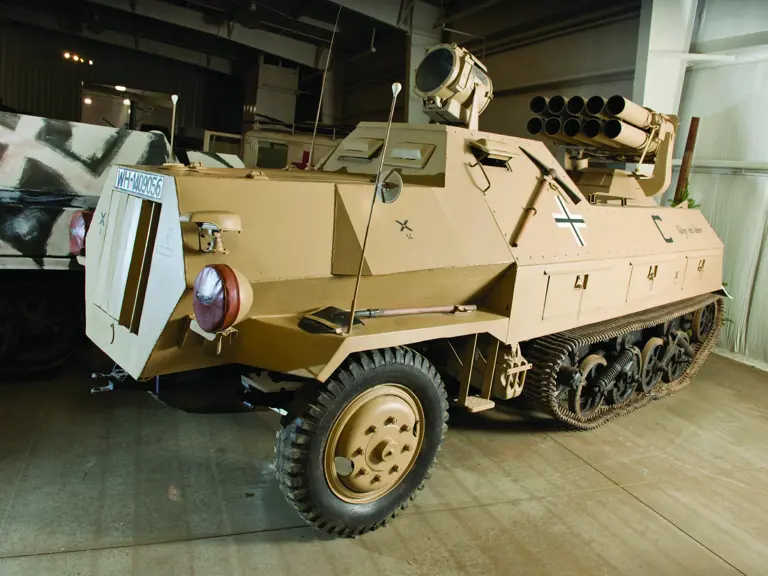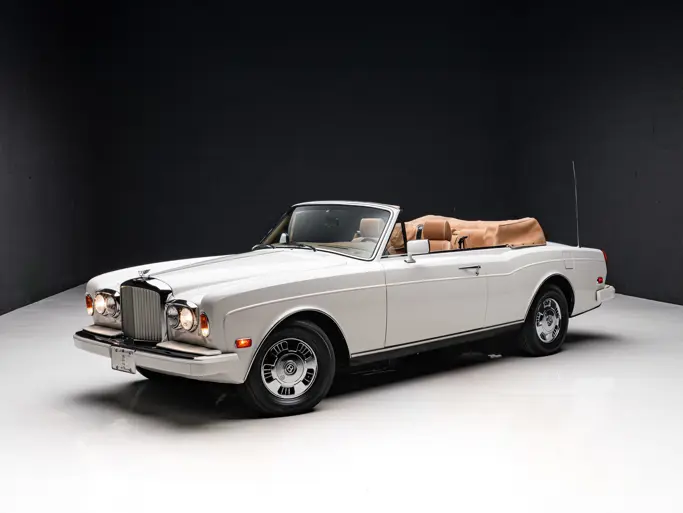
1943-44 Opel Maultier Panzer-Werfer 42
{{lr.item.text}}
$45,100 USD | Sold
{{bidding.lot.reserveStatusFormatted}}
- Manufacturer: Opel Division of General Motors, Germany
- Production Years: 1943-1944
- Engine: NO ENGINE OR TRANSMISSION (Buyer could source and utilize period engine and transmission or even late model diesel engine and transmission to get in running order)
- Length: 19-feet, 5-inches
- Width: 7-feet, 2-inches
- Height: 8-feet, 6-inches (to top of rocket launchers)
- Weight: Approximately 7-tons (loaded)
- Armor: Superstructure front, sides and rear: 8-mm, Hull front, sides and rear: 8-mm, Top and bottom: 6-mm
- Armament: One 15-cm, 8-barreled Nebelwerfer rocket launcher mounted on an armored swivel mount
- Maximum Speed: approximately 20-mph
- Crew: 4
- Markings: German 5th Panzer Division, Nebelwerfer Brigade
In 1942, Opel began production of 2-ton Maultier (Mule) half-tracks at their Brandenburg/Havel plant. The Maultier reportedly originated from a field modification carried-out by the 2nd SS Panzer Division “Das Reich” during the winter of 1941-42. Conditions on the Eastern Front were already poor, roads turned to seas of slush and mud in the spring thaw. This created almost impossible transportation situations for the wheeled truck units of the German army. A standard Ford 3-ton V3000S 4X2 truck was used as the basis of the conversion along with sets of Carden-Loyd tracks and bogey wheel assemblies from captured British Universal type carriers. In 1943, Opel was ordered to start production on an armored, self-propelled version of the 15-cm Nebelwerfer rocket launcher based on the Maultier half-track. Combat experience demonstrated the vulnerability of the towed Nebelwerfers. Conspicuous smoke trails, which resulted from firing Nebelwerfer rockets, left the exposed crews vulnerable to counter-battery fire. The armored Maultiers corrected this by providing mobility and protection. During World War II it’s reported that 300 Opel Panzer-Werfer 42s were produced.


 | Auburn, Indiana
| Auburn, Indiana


